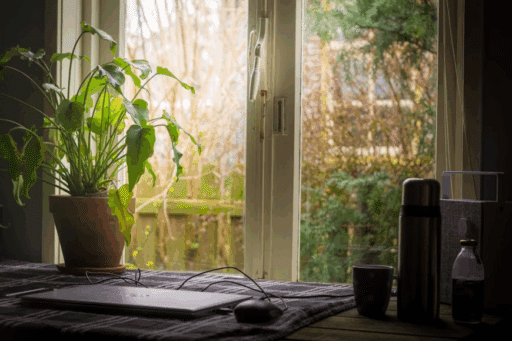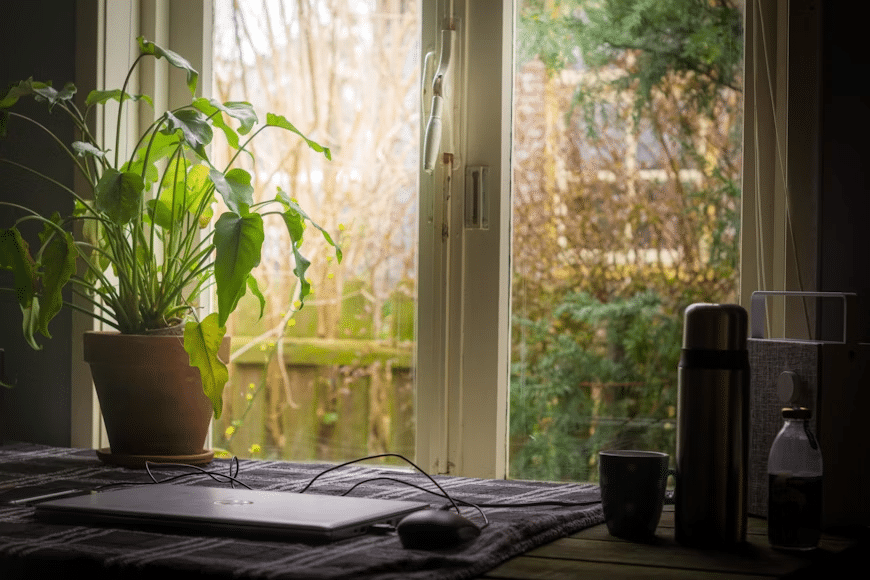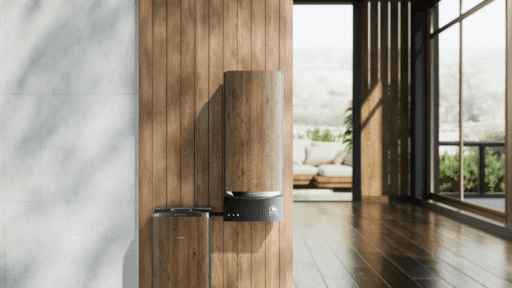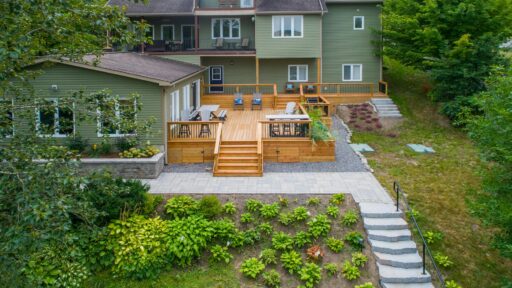Are you looking to turn some garden space into a productive home office?
A garden office has fast become one of the best bang-for-your-buck home improvement investments. With remote and hybrid work proving to be long term — 75% of employed adults work from home at least part of the time — we’re in need of proper workspaces more than ever before.
Let’s jump into the details to learn everything you need to know about a 12×10 garden office.
In this article you’ll find:
- Why Garden Offices Are A Home Improvement Winner
- Benefits That Matter
- Planning Considerations Before You Build
- Design Tips For The Best Workspace
- Costs & Installation Process
- Building A 12X10 Garden Office That Works Year Round
The Rise of Garden Offices in Home Improvement
Garden rooms are rapidly becoming a go-to solution for homeowners.
Home improvement spending is projected to reach $509 billion in 2025, showing the massive investment homeowners are making in their properties.
Many families invested in an outdoor room to help with working from home. The trends show that garden offices are only getting more popular.
The reasons are pretty clear:
You can’t always get away with working at the kitchen table or a bedroom corner. The distractions are endless.
The lack of space and lack of privacy in a typical household setup are other problems.
A garden office solves many of these issues, though.
Positioning the workspace out in the back garden provides a number of useful benefits:
- Separation of home and work
- Extra privacy when required
- Dedicated working space
Size is Key
Size is one of the first questions you’ll probably ask yourself. A 12ft x 10ft garden room is not huge but it also not tiny.
It provides a comfortable working space for most people.
A 12×10 office offers approximately 120 square feet to work with. This should be enough space for everything you’ll need.
Having said that, you want it to be small enough that it doesn’t look too out of place in your garden. Just right but not too big.
Benefits that Actually Matter
Building a garden office has several benefits over other home office solutions.
Here are a few of the more important ones:
Property Value
Home improvements that add usable space to your property are always a good idea.
A dedicated workspace in the garden is an attractive feature to prospective buyers.
They are often cheaper than more involved options like loft conversions and extensions.
Energy Efficiency
A properly built garden office will have better insulation and heating than your main house.
Garden offices come with many modern conveniences like insulation and their own heating system.
This means you can be comfortable all year without having to heat the entire house.
Conserve energy and money by only heating the office during the workday. Cool off the main living areas to maximize savings.
Mental Health
Separating your work area from the rest of the house is one of those features that make a big difference mentally.
Making the journey to the back garden in the morning to start working gets you in the mindset. Walking back at the end of the day helps switch off.
The physical distance helps with work/life balance. Many remote workers find they feel less stressed.
Things to Plan Before Building
Building a garden office is a project that involves more planning than you might think.
Foundation, electricity, internet, and positioning are some of the details that are easy to miss.
Plan before you start. Consider these points to avoid future headaches:
- Foundation And Groundwork
- Power And Internet
- Access And Pathways
- Natural Light And Positioning
Foundation And Groundwork
Your office needs a good foundation. This keeps the entire structure level.
It also provides protection from ground moisture and other issues.
Concrete slab, paving slabs on hardcore, and gravel are common types of foundations.
The kind of soil in your yard plays a factor too. Clay and sand are quite different in how they hold moisture.
Power And Internet
A garden office without power and internet is not much of an office.
Running electricity to the garden requires either an electrician or a high level of DIY skills.
Armored cable will be buried at the correct depth to ensure protection and safety.
Internet is another area that needs some thought. WiFi from the house may work but a direct line is more reliable.
Access And Pathways
Access is important when you start to think about delivery and installation. Can trucks get up to your garden with ease?
Once installed, how will people get to and from the office? A good path from the house is needed to keep mud off your feet in bad weather.
Gravel, paving stones, or decking are all good options.
Natural Light And Positioning
Ideally, you will have windows in more than one wall. The position of the office in the yard is a factor here.
North-facing positions provide a good amount of consistent light without too much glare on screens.
Windows to the south are more challenging in summer. Ventilation and airflow are important.
Design Ideas For The Best Workspace
The interior layout of your garden office will also make a difference in your productivity.
Consider these aspects when planning the interior:
- Smart Storage Solutions
- Flexible Furniture
- Sound Management
- Personal Touches
Smart Storage Solutions
Storage is important for keeping things organized. Wall-mounted cabinets, built-in shelving, and under-desk drawers keep clutter at bay.
Plan and design these into the office before you install anything.
Flexible Furniture
Choose furniture that will serve multiple functions.
Adjustable desks and multipurpose sofa beds are two examples. The goal is to be able to change up the space if needed.
Sound Management
You want your office to be a nice place to work in, not a tin can with echoes.
Acoustic panels, soft furnishings, and insulation are some of the tools you can use to improve sound quality.
Personal Touches
You are the person who will spend the most time in your new office. Make it reflect your personality.
Choose colors and decor that make you feel good and want to be there. Little things like plants can make a big difference.
Installation Process & Timing
Most garden offices will be delivered to your property as a prefabricated unit.
The big job is preparation and leveling the ground. Once the base is ready, installation can often be completed in just a few days.
Professional installers know what they are doing. They will ensure everything is level and secure.
The finishing work of connecting power and setting up utilities may take more time.
Building for Year-Round Use
A garden office will only be a success if you use it all year.
Weather can be a problem if you don’t have the right setup.
Insulation and double-glazed windows go a long way toward keeping things comfortable.
A small electric heater and a fan can cover both hot and cold extremes.
Tying It All Together
A garden office provides a better alternative to the kitchen table or a bedroom corner.
The separation and dedicated space create a professional atmosphere. This is important for remote work and making video calls.
The added workspace is also a feature that is attractive to prospective buyers.
A 12×10 office is the perfect size for most gardens. The extra insulation and heating mean the structure can be used all year round.
It’s a win-win investment that is worth considering.








